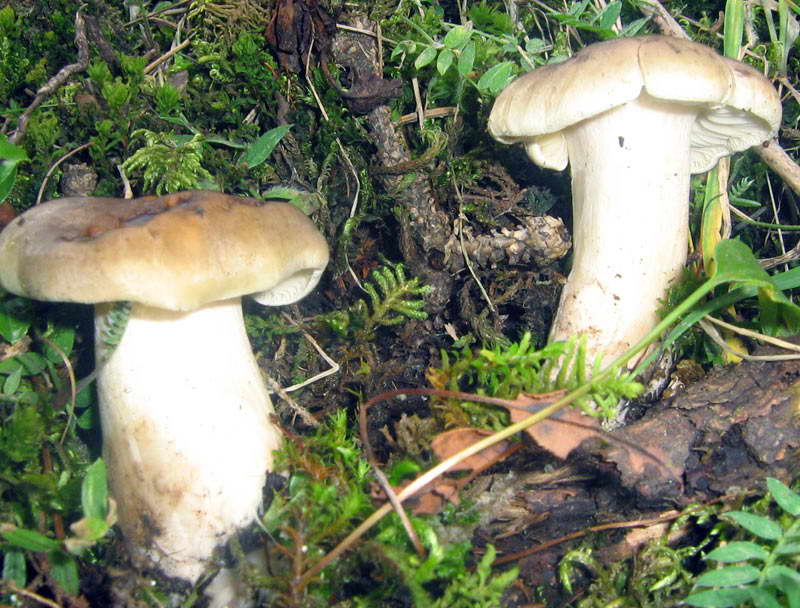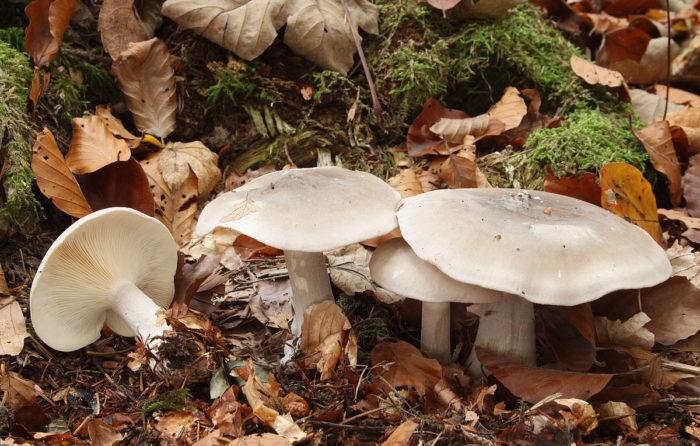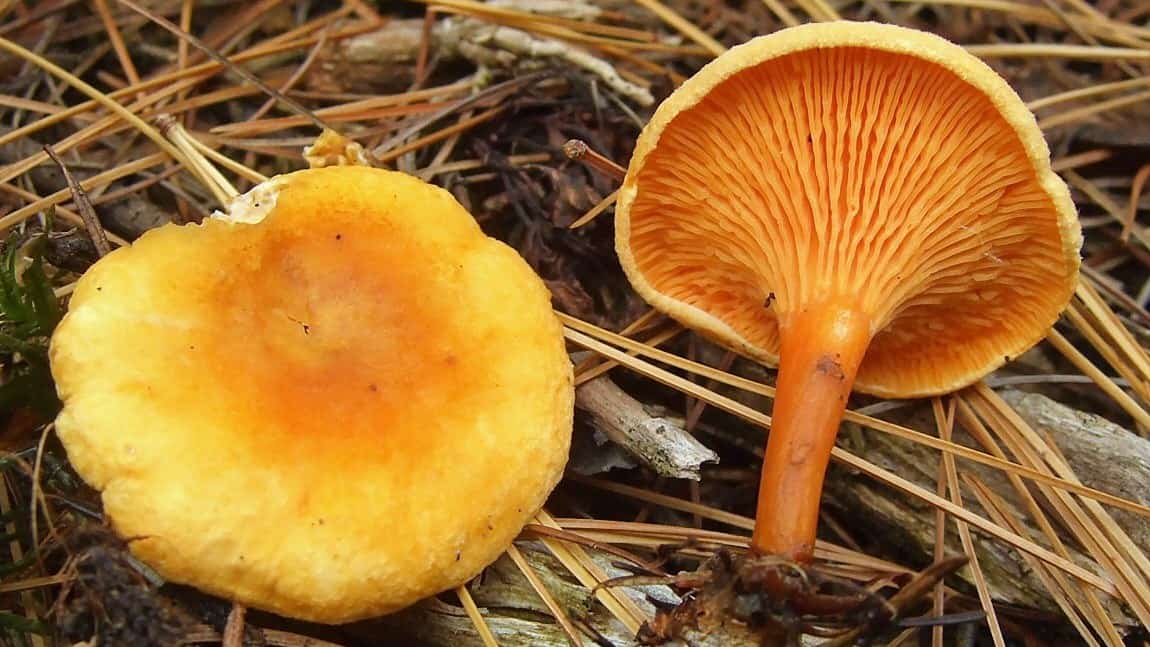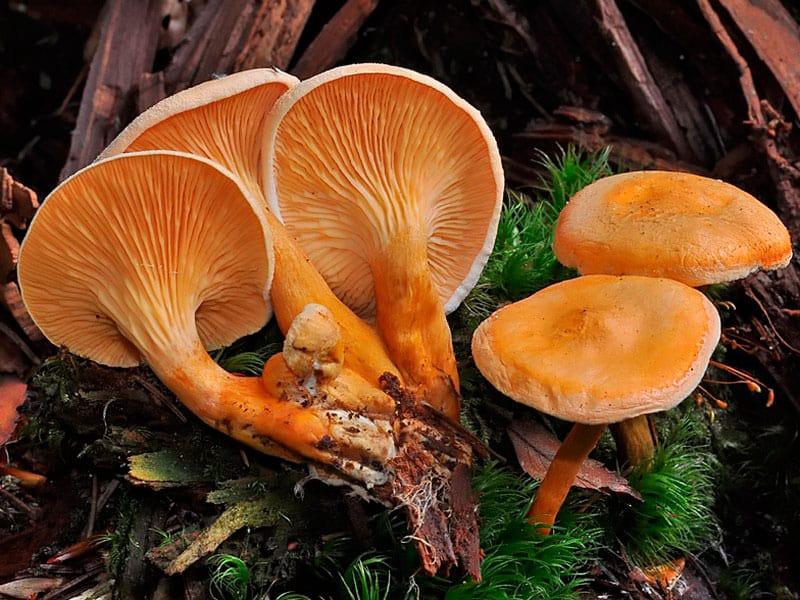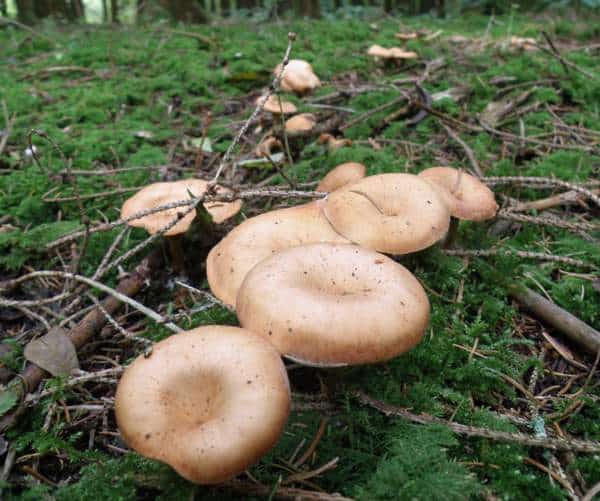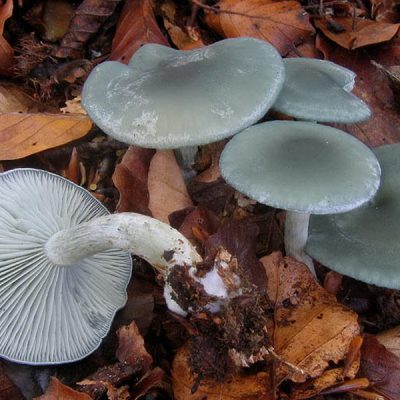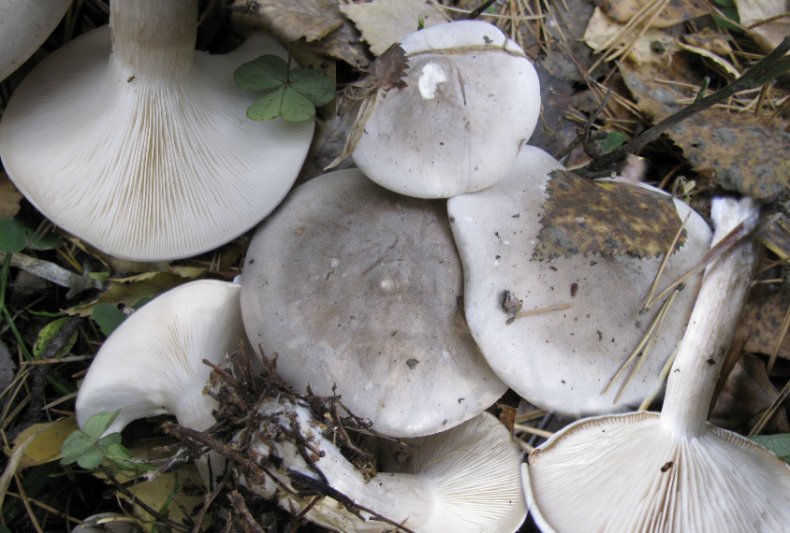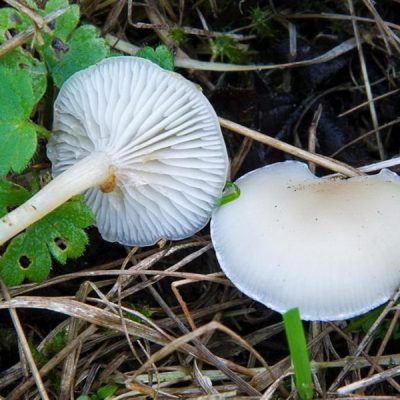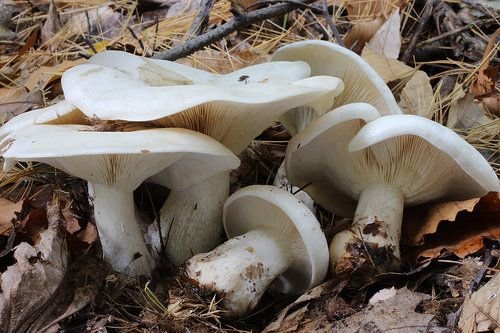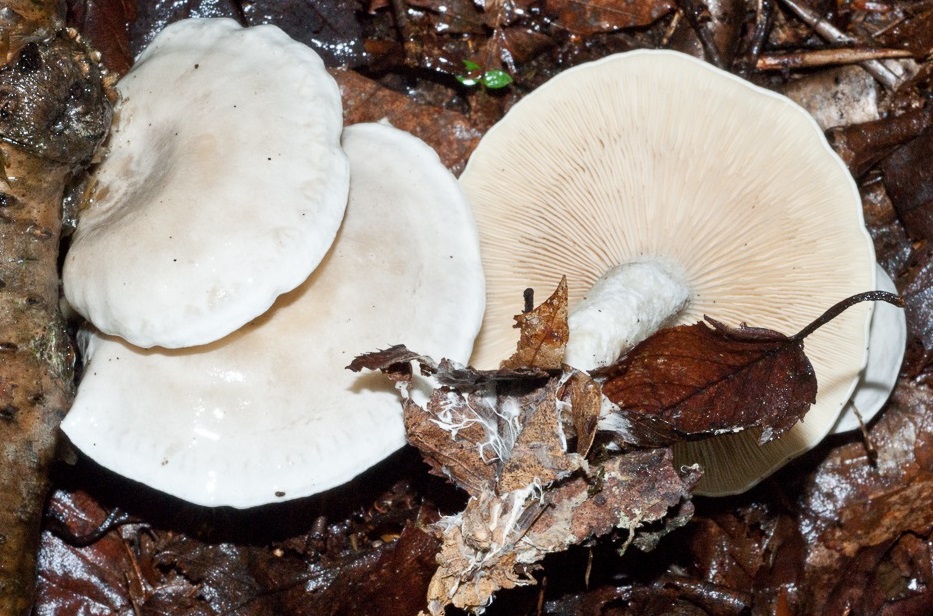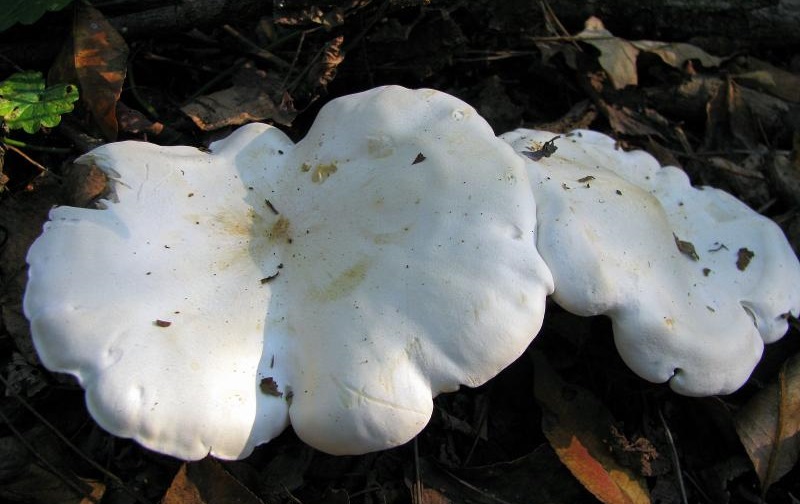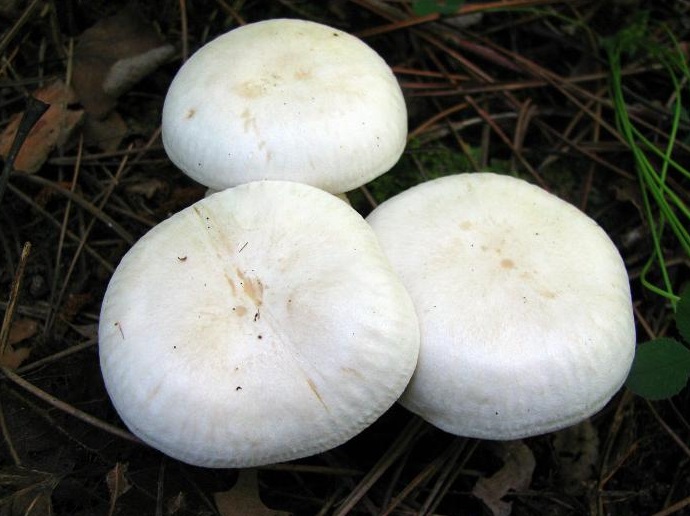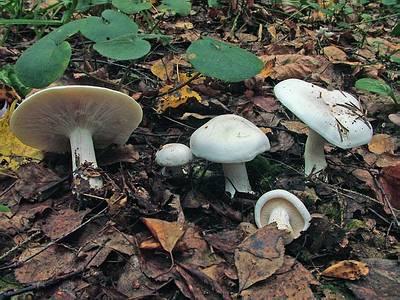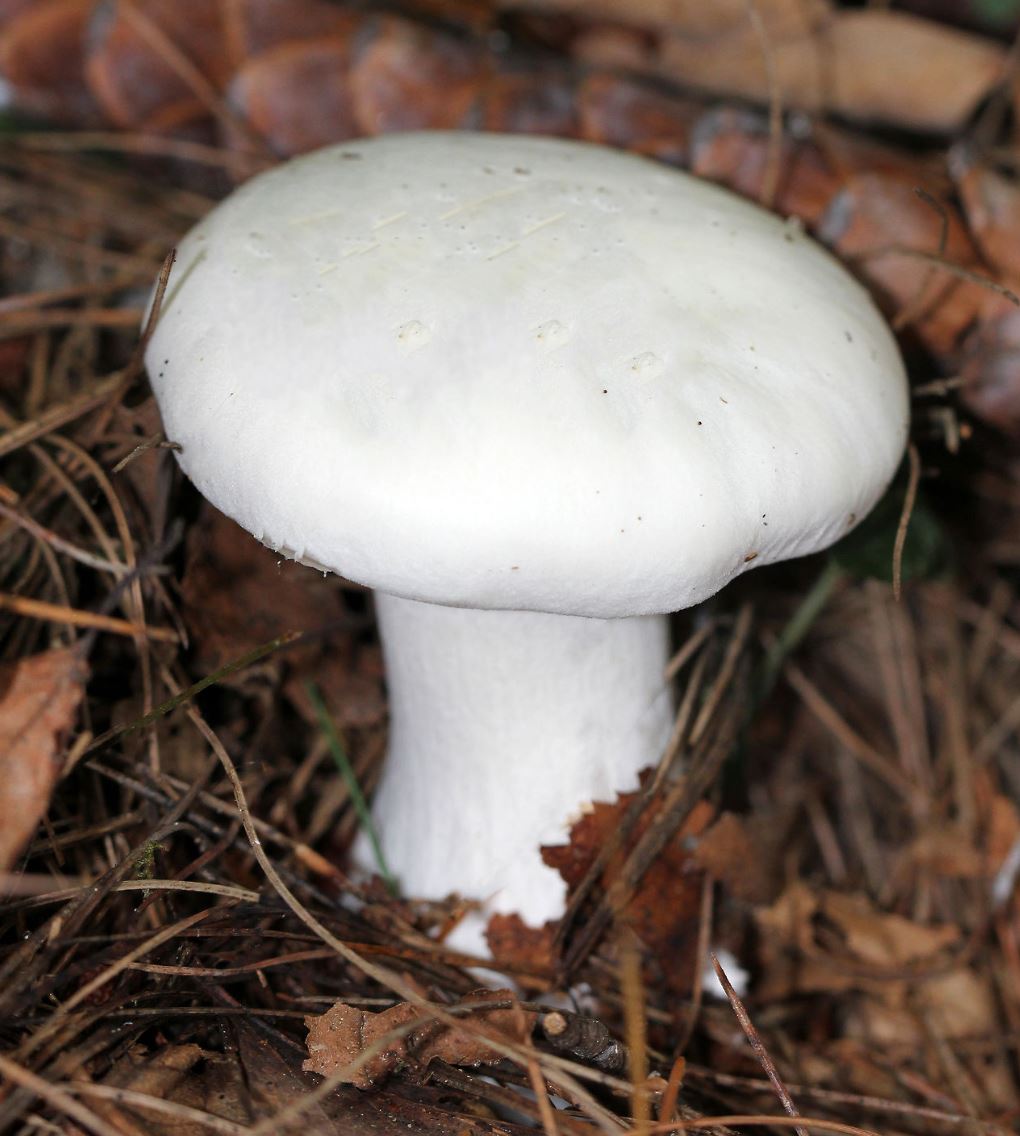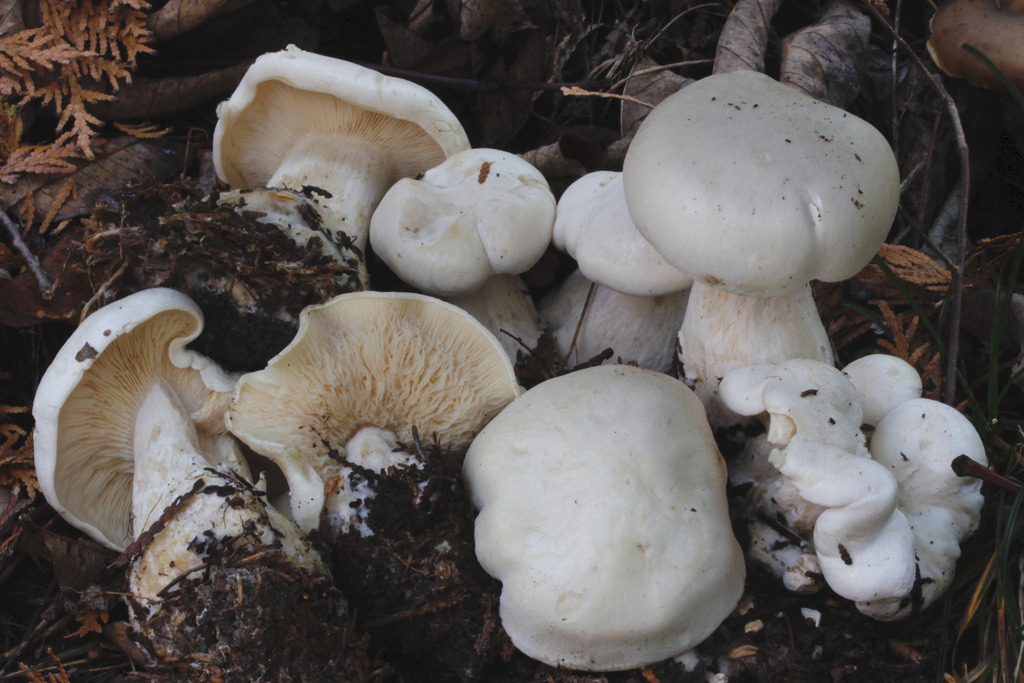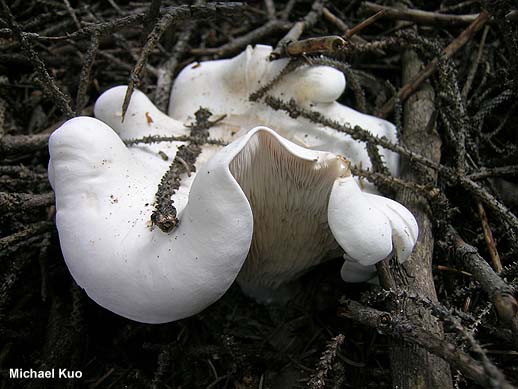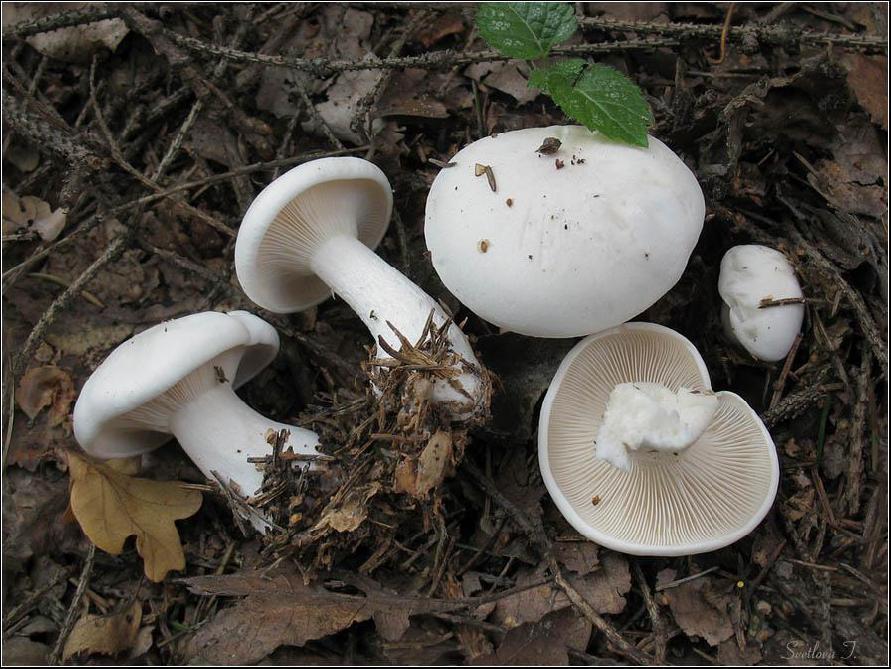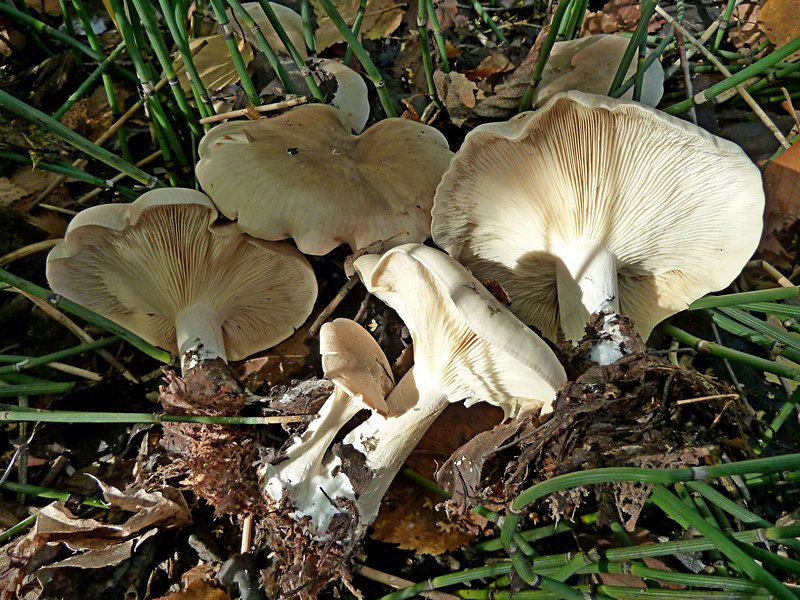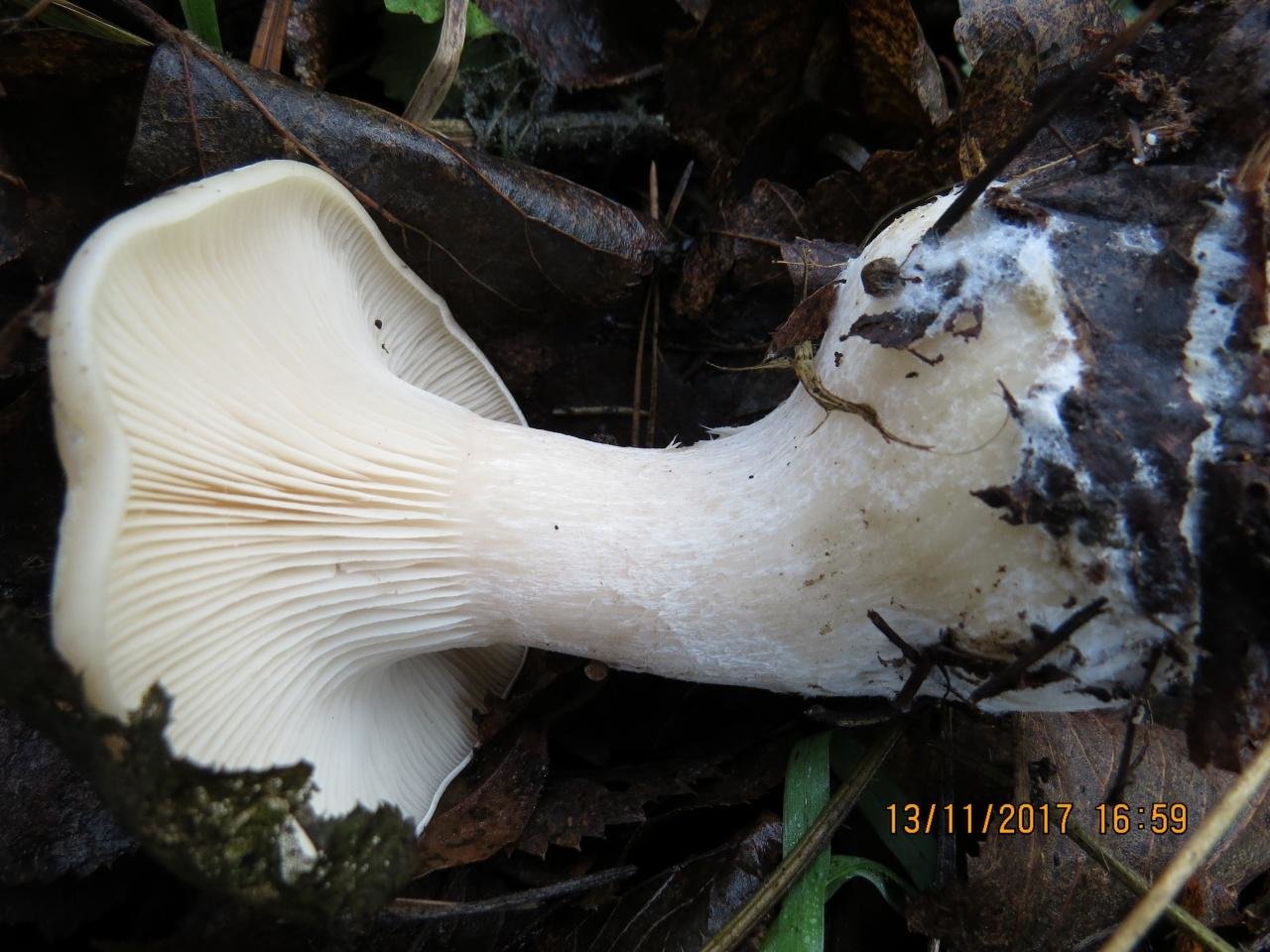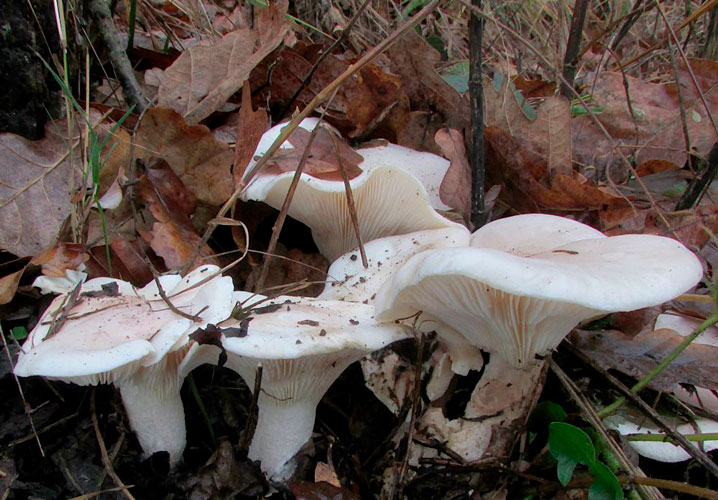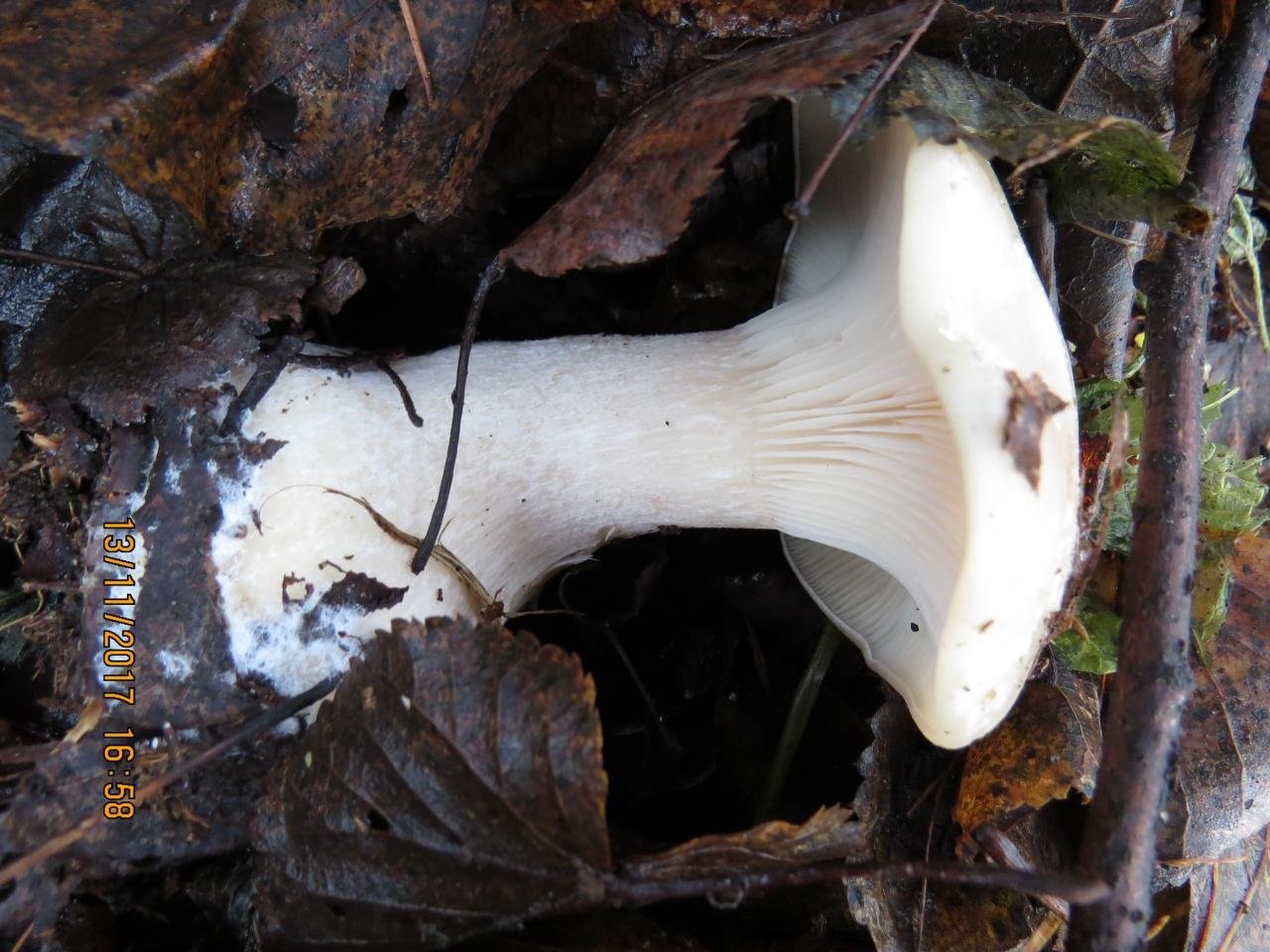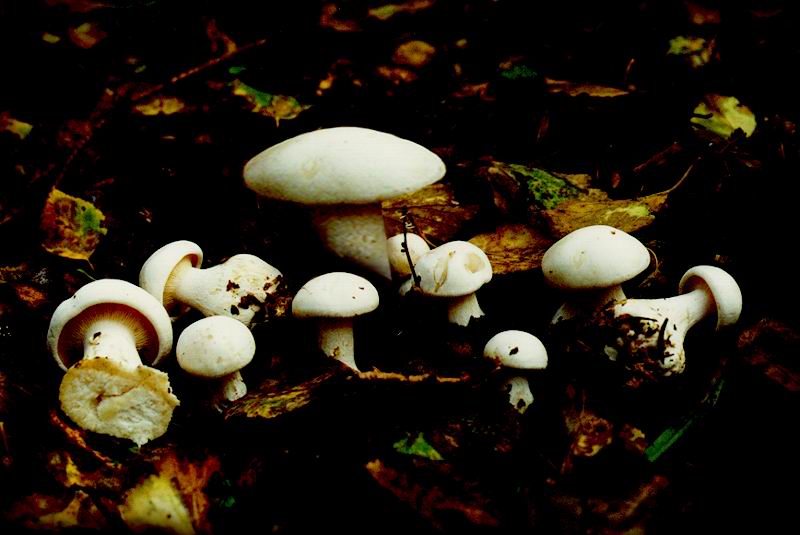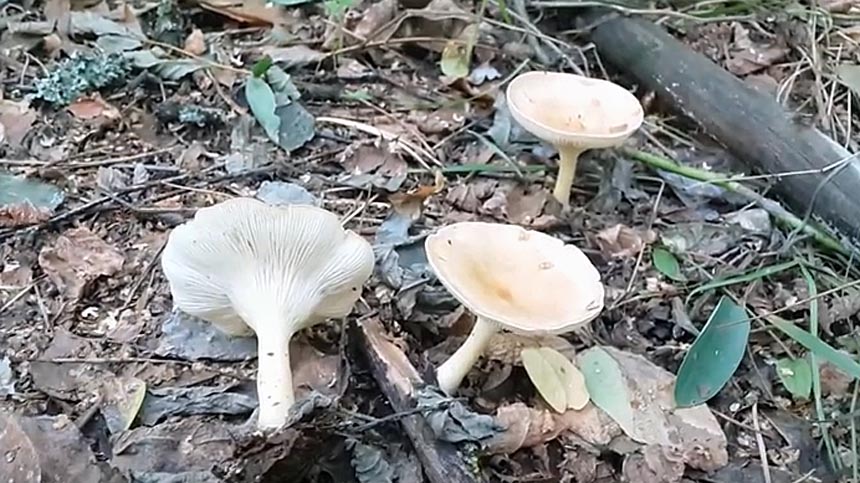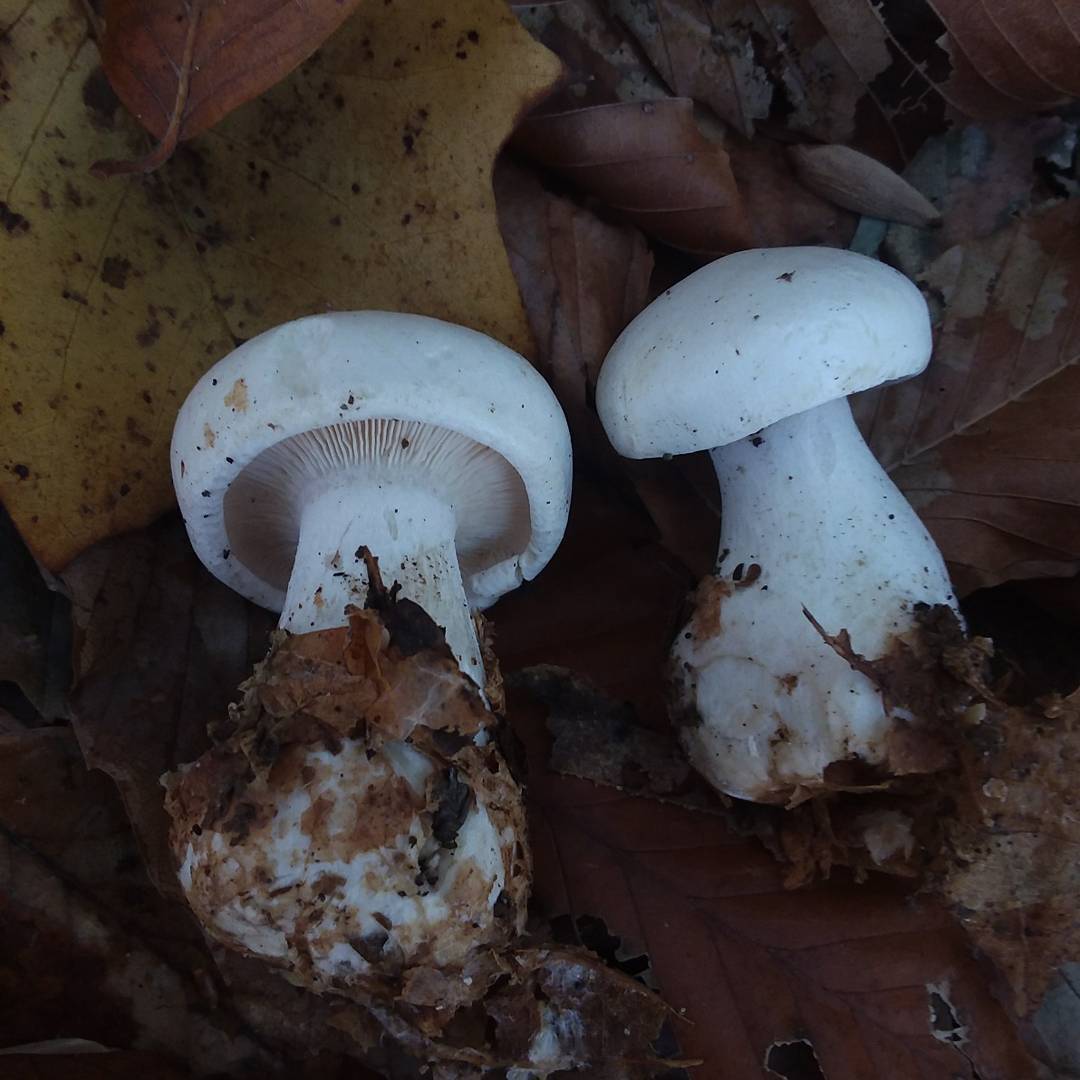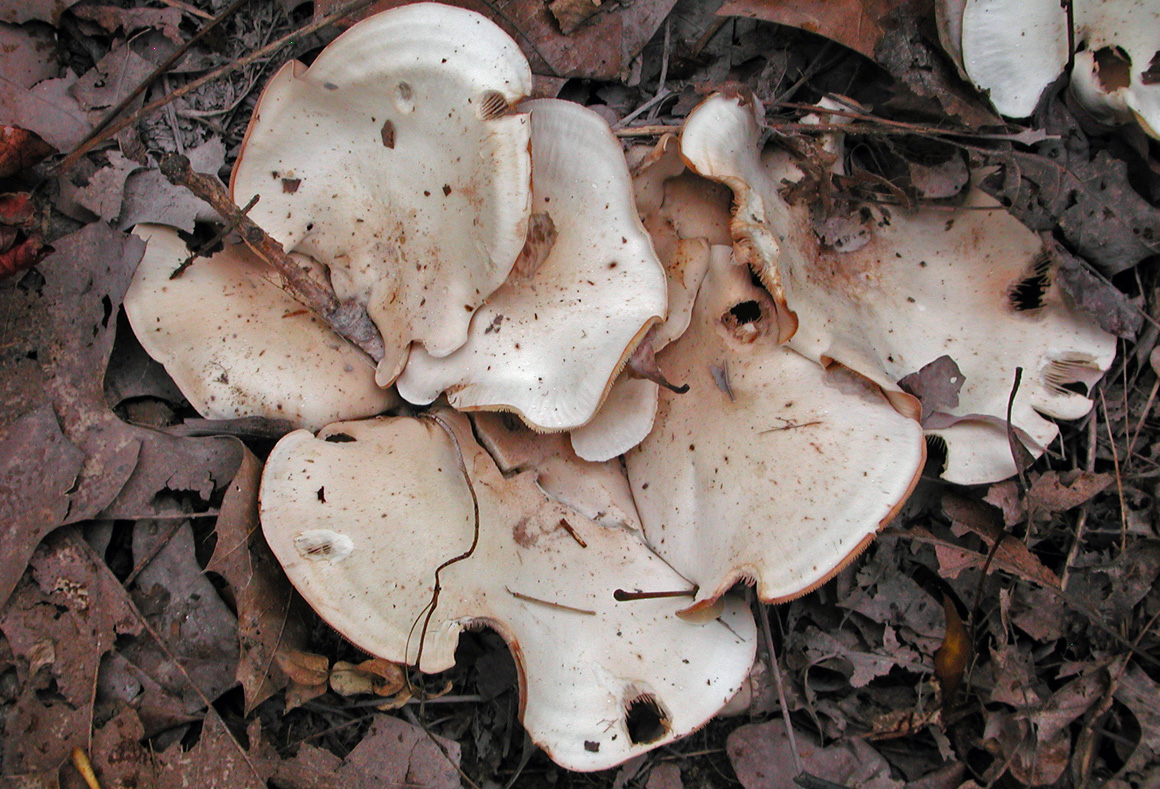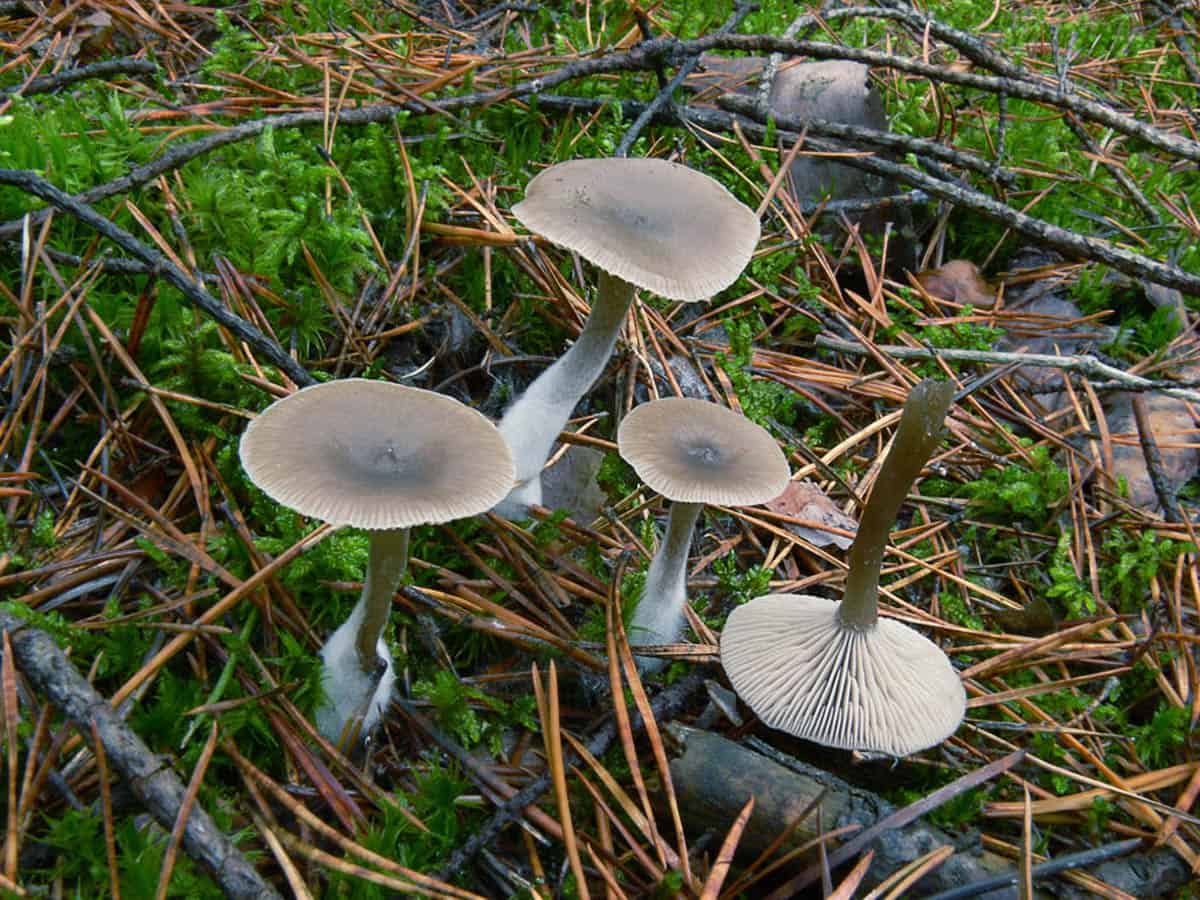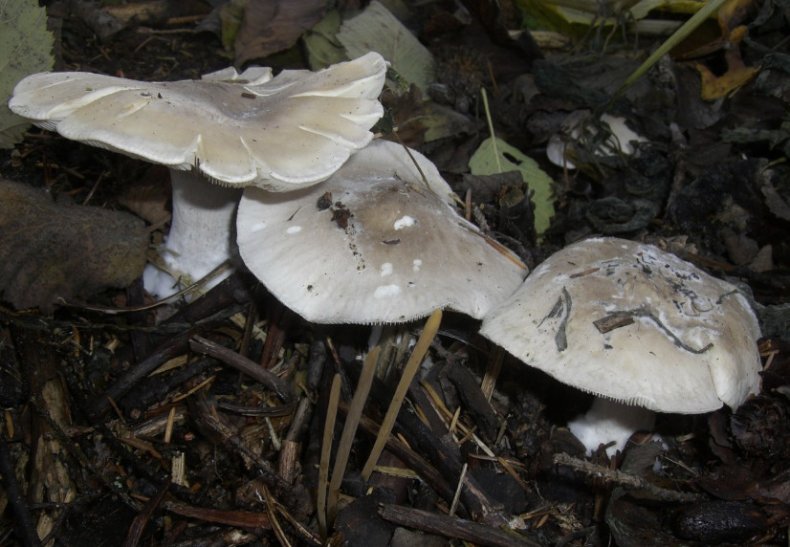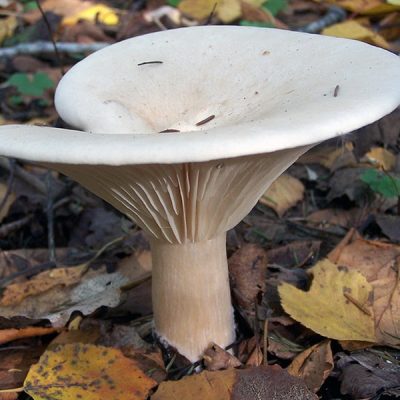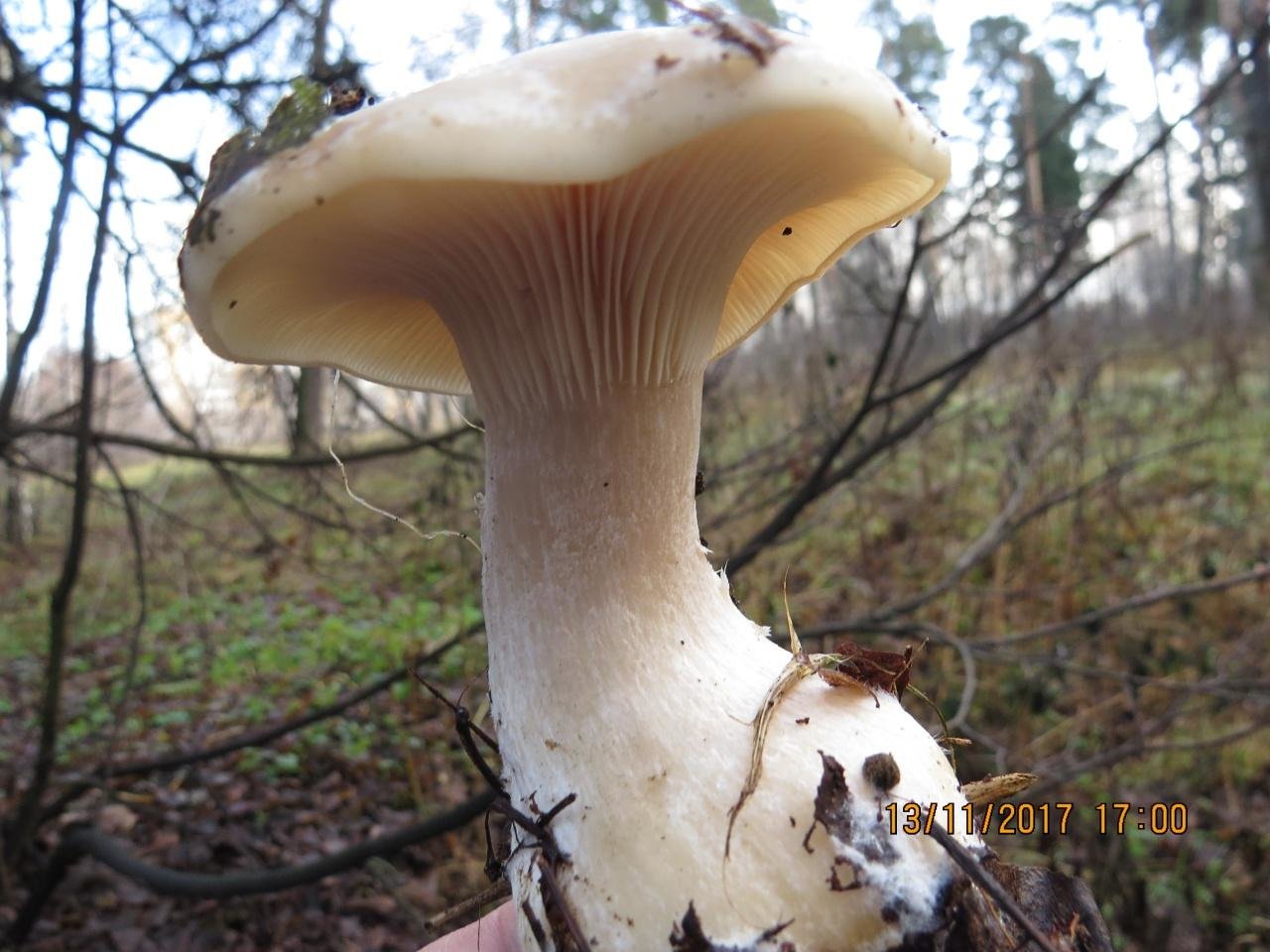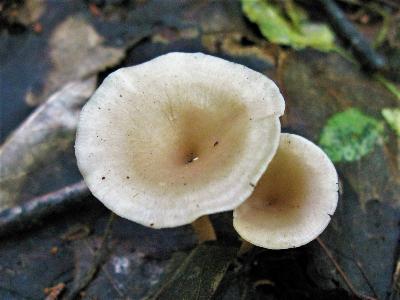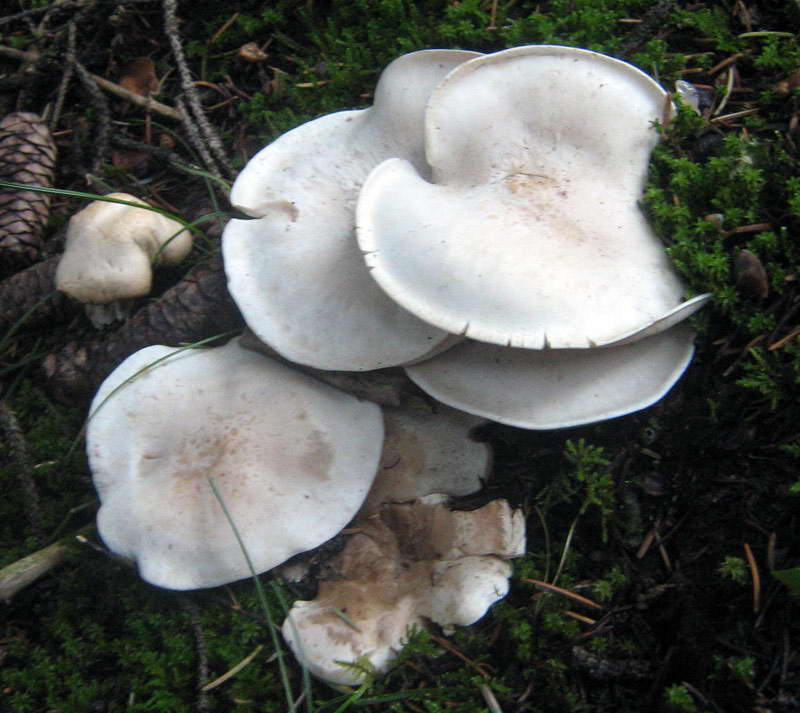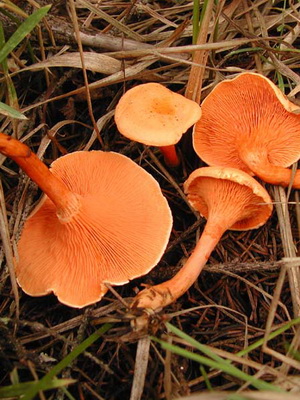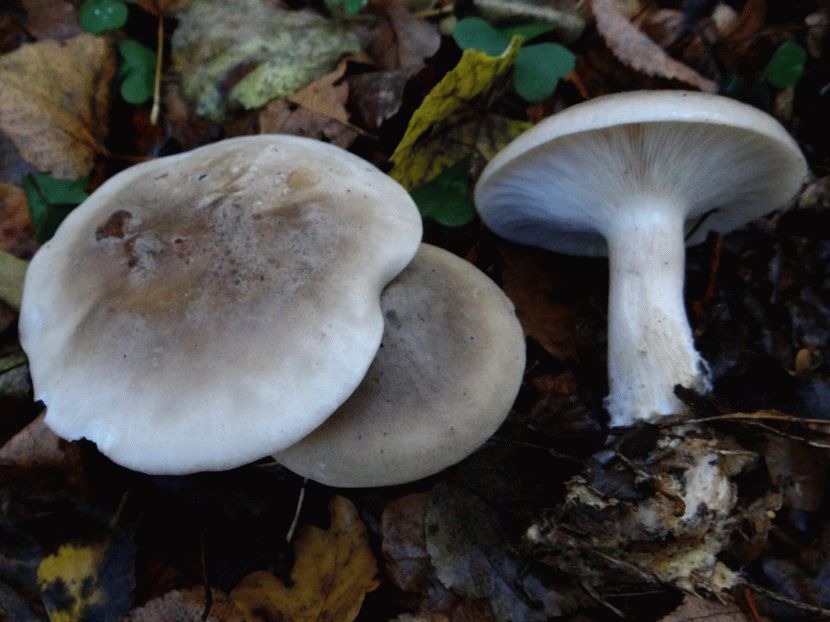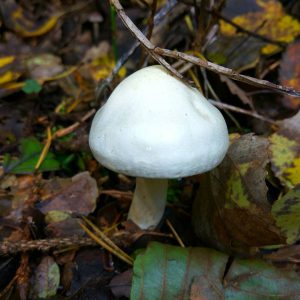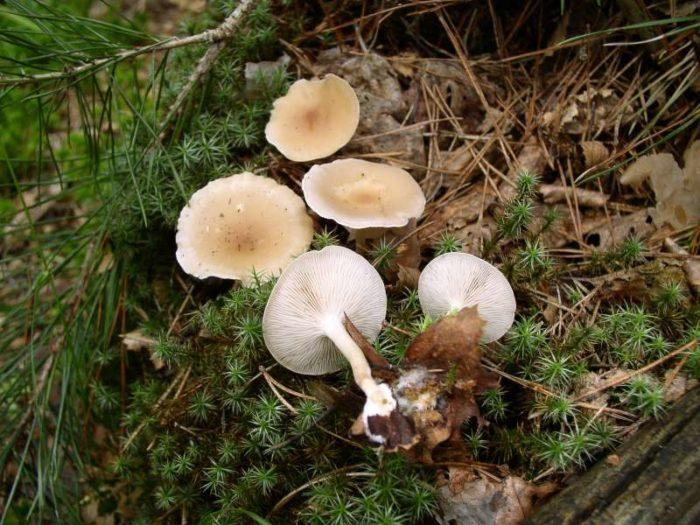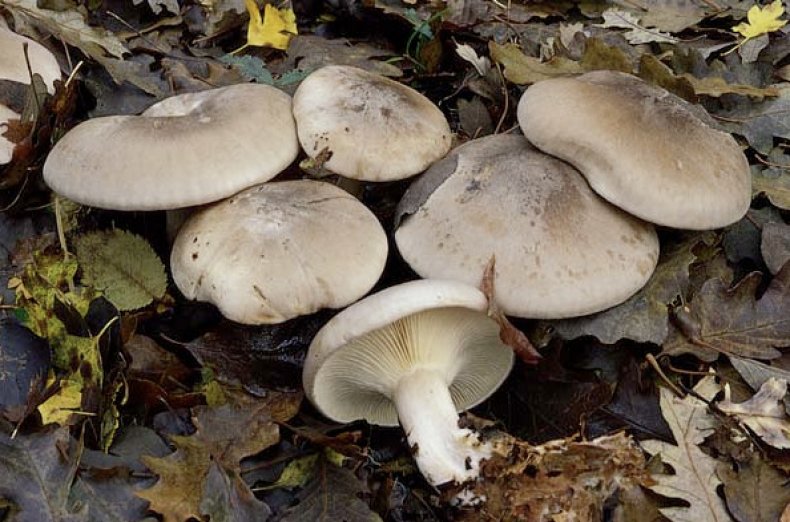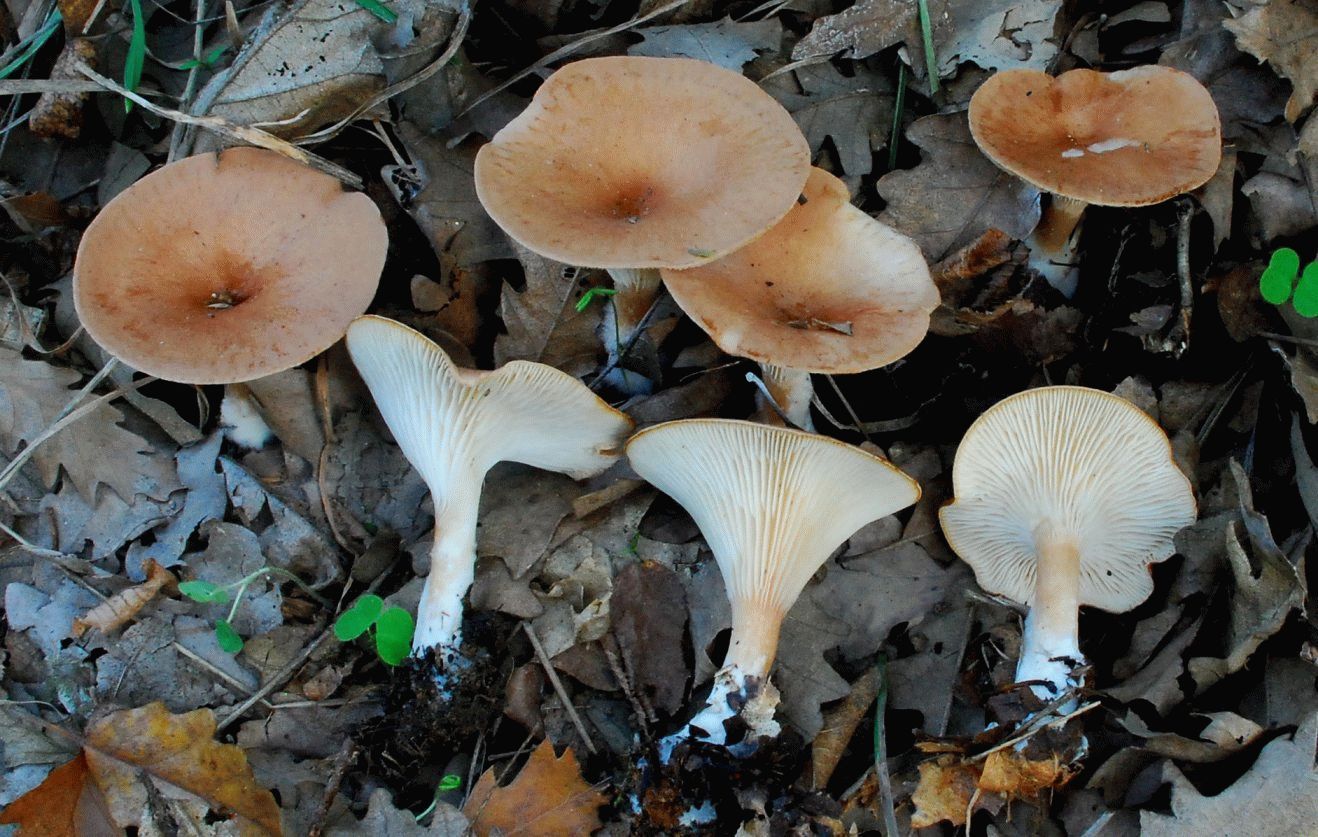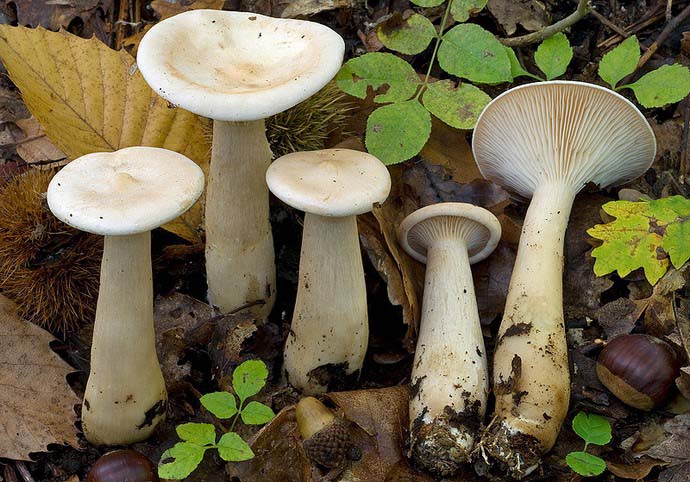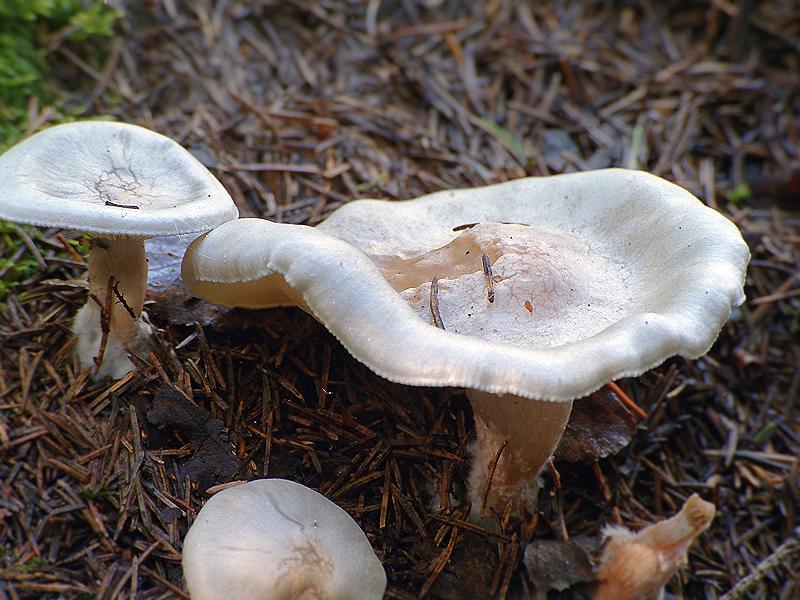Is the gray talker toxic
Once considered edible, this large and abundant mushroom is now classified as conditionally edible. It is not the most toxic mushroom, but it is seriously upsetting the gastrointestinal tract of some people who eat it, and therefore it is probably best avoided when picking mushrooms if there is a problem with the stomach and intestines.
Its aroma is also not in favor of this species. Some people find it "nauseous", when cooking, the smoky talker gives off a floral smell, to some it seems putrid and musty, sensitive people do not like it.
When the smoky talkers fully ripen or the fruiting bodies begin to disintegrate, parasitic parasitic parasitic fungi, volvariella, settle on them. It is always worth taking a closer look at each hat of the gray talker in case a white parasite has infected the host mushroom. Volvariella is inedible and poisonous.
Definitioner
- Basidia (Basidia)
-
Lat. Basidia. A specialized structure of sexual reproduction in fungi, inherent only in Basidiomycetes. Basidia are terminal (end) elements of hyphae of various shapes and sizes, on which spores develop exogenously (outside).
Basidia are diverse in structure and method of attachment to hyphae.
According to the position relative to the axis of the hypha, to which they are attached, three types of basidia are distinguished:
Apical basidia are formed from the terminal cell of the hypha and are located parallel to its axis.
Pleurobasidia are formed from lateral processes and are located perpendicular to the axis of the hypha, which continues to grow and can form new processes with basidia.
Subasidia are formed from a lateral process, turned perpendicular to the axis of the hypha, which, after the formation of one basidium, stops its growth.
Based on morphology:
Holobasidia - unicellular basidia, not divided by septa (see Fig. A, D.).
Phragmobasidia are divided by transverse or vertical septa, usually into four cells (see Fig. B, C).
By type of development:
Heterobasidia consists of two parts - hypobasidia and epibasidia developing from it, with or without partitions (see Fig. C, B) (see Fig. D).
Homobasidia is not divided into hypo- and epibasidia and in all cases is considered holobasidia (Fig. A).
Basidia is the place of karyogamy, meiosis and the formation of basidiospores. Homobasidia, as a rule, is not functionally divided, and meiosis follows karyogamy in it. However, basidia can be divided into probasidia - the site of karyogamy and metabasidia - the site of meiosis. Probasidium is often a dormant spore, for example in rust fungi. In such cases, probazidia grows with metabasidia, in which meiosis occurs and on which basidiospores are formed (see Fig. E).

See Karyogamy, Meiosis, Gifa.
- Pileipellis
-
Lat. Pileipellis, skin - differentiated surface layer of the cap of agaricoid basidiomycetes. The structure of the skin in most cases differs from the inner flesh of the cap and may have a different structure. The structural features of pileipellis are often used as diagnostic features in descriptions of fungi species.
According to their structure, they are divided into four main types: cutis, trichoderma, hymeniderma and epithelium.
See Agaricoid fungi, Basidiomycete, Cutis, Trichoderma, Gimeniderm, Epithelium.
- Cutis
-
The type of cap skin, consists of creeping non-gelatinized hyphae located parallel to the surface. The surface of the cap looks smooth.
Lat. Cutis.
See Gifa.
Leaf-loving talker (Clitocybe phyllophila)
- Other names for the mushroom:
- Deciduous talker
- Waxy talker
Synonyms:
- Waxy talker
- Greyish talker
- Lepista phyllophila
- Clitocybe pseudonebularis
- Clitocybe cerussata
- Clitocybe difformis
- Clitocybe obtexta
- Clitocybe dilatata
- Clitocybe pithyophila
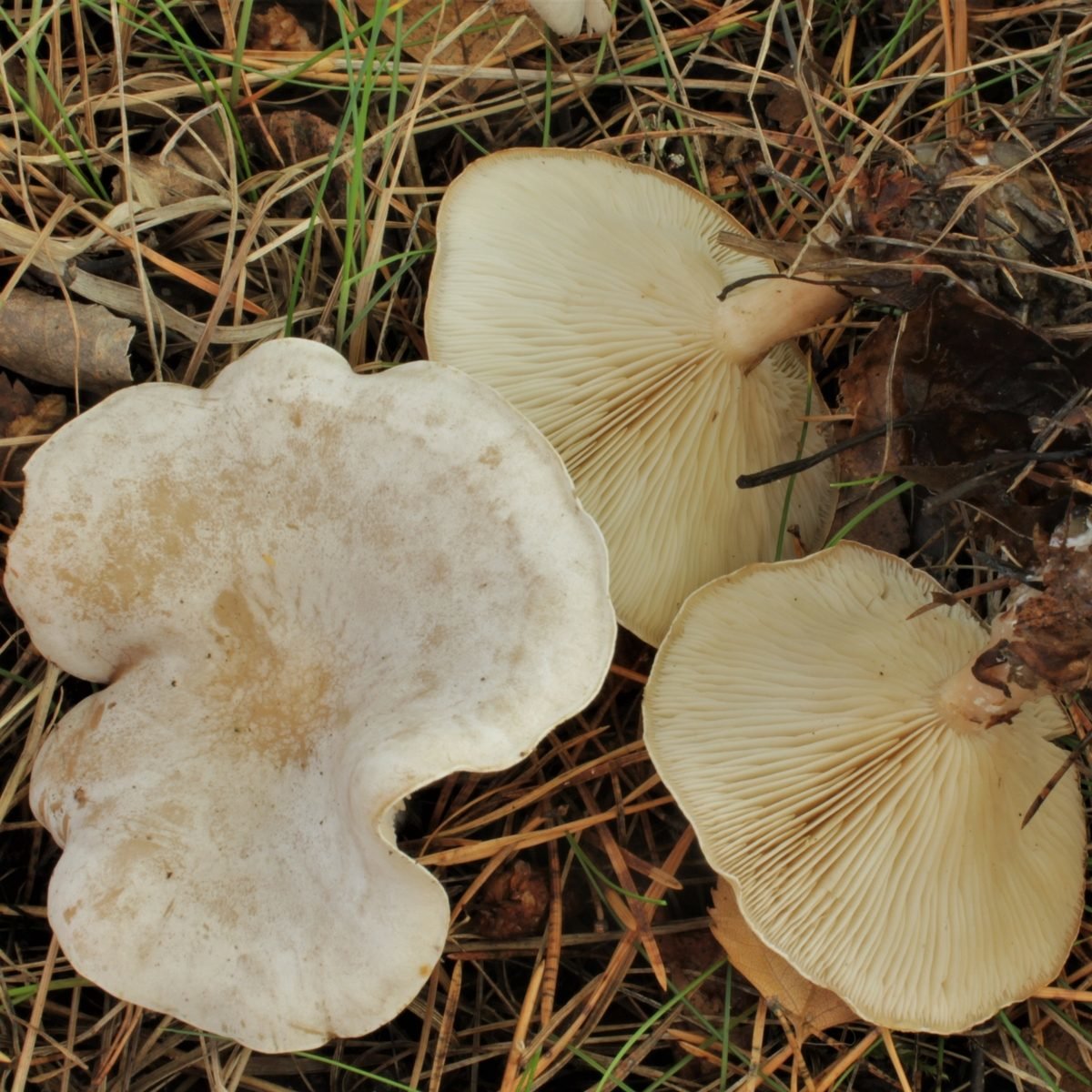
Description
A hat with a diameter of 5-11 cm, in youth it is convex with a tubercle and a marginal zone tucked inward; later flat, with a turned-up edge and a barely noticeable elevation in the center; and, ultimately, funnel-shaped with a wavy edge; marginal zone without radial banding (i.e., the plates do not shine through the cap under any conditions); unhygropic. The cap is covered with a white waxy layer, under which the surface of a flesh-colored or brownish shade, sometimes with ocher spots, shines through; in the marginal zone of older fruiting bodies, watery spots are visible. Sometimes this waxy coating cracks to form a "marble" surface. The peel from the cap is removed to the very center.
The plates are adherent or slightly descending, with additional plates, 5 mm wide, not very frequent - but also not very rare, about 6 plates per 5 mm in the middle part of the radius, covering the lower surface of the cap, extremely rarely bifurcating, at first white, later ocher -cream. The spore powder is not pure white, but rather a dirty flesh-colored or pinkish-cream shade.
The leg is 5-8 cm high and 1-2 cm thick, cylindrical or flattened, often slightly widened at the base, less often tapering, at first white, later dirty-ocher. The surface is longitudinally fibrous, in the upper part it is covered with silky hairs and a whitish “frosty” coating, at the base with woolly mycelium and a ball of mycelium and litter components.
The flesh in the cap is thin, 1-2 mm thick, spongy, soft, white; stiff in the stalk, pale ocher. The taste is soft, with an astringent aftertaste. The smell is spicy, strong, not quite mushroom, but pleasant.
Spores often stick together in two or four, size (4) 4.5-5.5 (6) x (2.6) 3-4 microns, colorless, hyaline, smooth, ellipsoid or ovoid, cyanophilic. Hyphae of the cortical layer 1.5-3.5 µm thick, in deeper layers up to 6 µm, septa with buckles.
Ecology and distribution
Leaf-loving talker grows in forests, more often on deciduous litter, sometimes on coniferous (spruce, pine), in groups. Active fruiting season from September to late autumn. It is common in the northern temperate zone and is found in mainland Europe, Great Britain and North America.
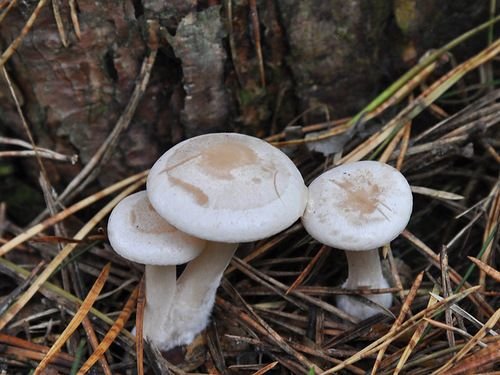
Poisoning symptoms
Before the first symptoms of poisoning appear, it takes from half an hour to 2-6 hours. Begins nausea, vomiting, diarrhea, abdominal pain, profuse sweating, sometimes drooling, pupils narrowing. In more severe cases, severe shortness of breath appears, the secretion of bronchial secretions increases, blood pressure drops and the pulse decreases. The victim is either agitated or depressed. Dizziness, confusion, delirium, hallucinations and, ultimately, coma develop. Mortality occurs in 2-3% of cases and occurs after 6-12 hours with large quantities of eaten mushroom. Fatalities are rare among healthy people, but for people with heart and respiratory problems, as well as for the elderly and children, it is a serious danger.
We remind you: at the first symptoms of poisoning, you should immediately consult a doctor!
How to distinguish a deciduous talker from other mushrooms
Under certain conditions, a conditionally edible saucer-shaped govorushka (Clitocybe catinus) can be taken for a deciduous gossip, but the latter has a matte surface of the cap and more descending plates. In addition, the saucer-shaped spores are of a different shape and larger, 7-8.5 x 5-6 microns.
The bent beetle (Clitocybe geotropa) is usually twice as large, and its cap has a pronounced tubercle, so it is often quite easy to distinguish between the two species. Well, and the spores of the bent talker are somewhat larger, 6-8.5 x 4-6 microns.
It is much more unpleasant to confuse edible sub-cherry (Clitopilus prunulus) with a vernacular gossip, but it has a strong flour smell (for some, however, it is rather unpleasant, reminiscent of the smell of spoiled flour, forest bug or overgrown cilantro), and pinkish plates in mature mushrooms are easily separated from the cap with a fingernail. In addition, the spores are larger in the sub-cherry.
Funnel talker
Funnel talker (Clitocybe gibba) - Latin name. This species is part of the Clitocybe genus of the Tricholomataceae or Tricholomovy family. Other names: funnel mushroom, hare ears, funnel-shaped talker.
Similar species
When the mushroom is already an adult, it is almost impossible to confuse it with other types of mushrooms. But at the same time, some mushroom pickers believe that if the mushroom is light, then it looks almost like a poisonous whitish talker (Clitocybe dealbata).
Description
In young mushrooms, the cap is initially distinguished by its matched edges and bulge. Over time, the shape becomes goblet, noticeably funnel-shaped. A hat with a diameter of four to eight cm. Shade of a hat: grayish-yellow, fawn. She is leathery. Thick pulp is observed only in the center, and so it is thin, dry, white with a recognizable smell. The plates are descending along the pedicle, white and frequent. White spore powder. The leg reaches a diameter of one cm, and is 3-7 cm long. It becomes thicker towards the base, is solid, elastic-flexible, fibrous. She has the same shade as the hat, or it can be lighter. Quite often, a special fluff from hyphae covers it near the base.
Sprouting
The funnel-shaped talker can be encountered by mushroom pickers near the paths, in the most different forests. Quite often, these mushrooms grow in large numbers in groups. Prefers to grow in litter, but rather shallow. Can be harvested from mid-July to late September. Prefers shrubs, mixed and deciduous forests, pastures. Mushroom pickers can meet the funnel-shaped talker in the North Caucasus, Western Siberia, and the European part of Russia. Belongs to the fourth category, to edible types of mushrooms. For cooking, you only need mushroom caps, which can be dried, salted, boiled. Initially, you need to boil the mushroom, and pour the broth.
Composition
Mushrooms such as talkers contain nebulin (antimicrobial substance). It is not as active as the antibiotic clitobicin, but it is similar in its properties. In this case, side effects are not observed during treatment. An aqueous extract of these fungi is often used to heal patients with wound microflora. The effect of the extract resembles the action of well-known antibiotics: biomycin, streptomycin, levomycin.
Contraindications
Should be eaten with care so as not to be confused with other mushrooms. In various literature, it is allowed to eat, for example, from the age of twelve
Recipes
The funnel-shaped talker is cleaned of debris before cooking, damaged parts are cut off. Then warm water is taken and the mushrooms are washed well with it. To soak them, they are left in water for ten minutes and then dried. Boil without fail before pickling or pickling. For pickling, a strong marinade with acetic acid is taken. The dishes must be sterile. They are used for food only after they have been boiled for twenty minutes. Then you can put these mushrooms in main courses or soups.
- Saute vegetable with govorushki Eggplant or zucchini, peppers, potatoes, onions and tomatoes should be stewed for fifteen minutes. After that, boil the talkers and add together with bay leaves, pepper, salt. From time to time during the cooking process you need to add water. Bring to readiness.
- Risotto with talkers Canned peas, stewed vegetables and corn should be fried along with boiled mushrooms. Boiled rice and sunflower oil should be added after the liquid has evaporated. Fry for five or seven minutes, seasoning to taste.
- Salting Mushrooms are soaked, washed, scraped off forest dirt. Hot and cold pickling can be used.
Smoky talker appearance
Hat
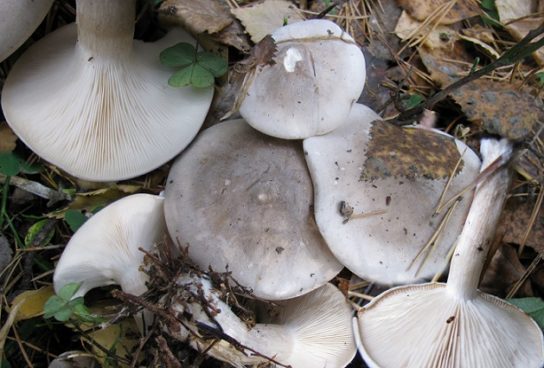
Initially convex or conical, at the age of one month, the cap of this large mushroom completely stretches, then flattens and becomes slightly funnel-shaped with a wavy edge that remains lowered or even slightly curled.
When fully open, the gray, often with a cloudy pattern in the central area, the smoky talker cap has a diameter of 6 to 20 cm. The surface is covered with a pale felt bloom.
Gills
With age, the white gills become pale cream, the frequent gills of Clitocybe nebularis slightly adjoining the peduncle.
Leg
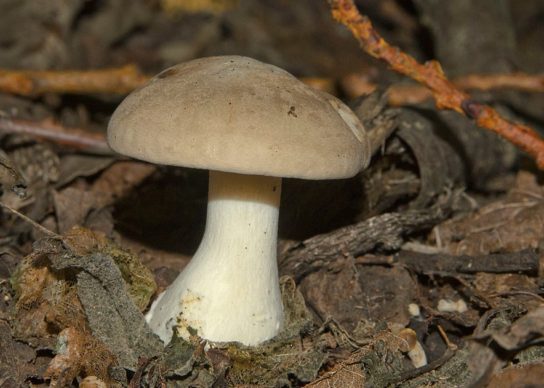
Diameter from 2 to 3 cm, widens at the base, the solid stem of the smoky talker is 6 to 12 cm high, smooth and slightly paler than the cap.
What a talker is gray in smell / taste
Sweet fruity smell (some people smell turnip), no distinctive taste.
Talker (mushroom) - photo and description
Hat
Small to medium-sized talker hat. Its diameter ranges from 3 to 6 cm, however, there are specimens in which this figure reaches 10-15 cm. In young talkers, the cap has a hemispherical shape. As it grows, it evens out, and in mature mushrooms it often has a depressed shape, up to a funnel-shaped one. Under normal weather conditions, the surface of the cap is dry and smooth. Its color can be whitish, grayish-brown, fawn, pinkish-brown and even various shades of ocher color. The color intensity is uneven, lightening from the center to the edge of the cap. Often on its upper surface, a residual mycelium is found, similar in appearance to mold spots.
Leg
The height of the talker's leg depends on the species of the mushroom and can reach 8 cm, and its diameter ranges from 0.5 cm to 3 cm.
Anise talker: photo, description, edibility
| Name: | Anise talker |
| Latin name: | Clitocybe odora |
| Type of: | Conditionally edible |
| Synonyms: | Fragrant Talker, Fragrant Talker |
| Specifications: |
|
| Systematics: |
|
Aniseed talker belongs to the Ryadovkovye family, the Klitotsybe genus. Refers to saprotrophs. The main feature of the mushroom is its pronounced anise aroma. It is so strong that it can be felt a few meters before the fruiting bodies, especially in warm and windy weather. Another name is fragrant / fragrant talker.
Where anise talkers grow
It is found mainly in deciduous and mixed forests, less often in conifers. Prefers to settle where there are oaks. Grows on forest floor, bears fruit in small groups or singly. Distributed in central Russia, does not come across often.
What anise talkers look like
The mushroom is small. The diameter of the cap does not exceed 8 cm, most often from 3 to 5 cm. In a young specimen, it is convex, straightens as it grows, becomes flat or depressed, with a tubercle in the middle. The edge is wavy, sometimes raised. The color can be different: gray-lilac, greenish, blue-blue. With a lack of moisture, it becomes whitish.
Anise talker in the photo below.
The plates are quite frequent, adherent, less often weakly descending. The color is the same as the hat.
The stem is not hollow, cylindrical, grayish, with a greenish or yellowish tinge. The base is slightly widened, brown, pubescent. The sizes are small: up to 5 cm in height and up to 0.5 cm in thickness.
The pulp is light, watery, not fleshy, smells strongly of anise.
Taste qualities of anise govorushka mushroom
The taste is mild, the aroma is bright, anise-dill. The smell does not disappear even after boiling, so not everyone will like the mushroom.
Benefits and harm to the body
The fragrant talker contains clitocybin. This natural antibiotic helps with tuberculosis. In folk medicine, it is used to treat epilepsy and reduce plaque cholesterol in blood deposits.
Like any mushrooms, they are difficult to digest. People with gastrointestinal diseases should refuse them or use them in small quantities. Not recommended for children.
False doubles
Because of the aroma and characteristic color, the fragrant talker is almost impossible to confuse with other mushrooms.
The fragrant talker smells similarly, but she has a yellowish cap. Refers to conditionally edible.
Mushrooms with discolored caps can be mistaken for white types of talkers, among which there are poisonous ones.
Whitish. It is a deadly poisonous species with a flour smell. It differs from anise, which has lost its color due to lack of moisture, in the absence of a characteristic aroma.
Waxy. Poisonous species, has a spicy, but pleasant enough mushroom aroma. Poisoning can be fatal.
Grooved. Refers to inedible species. The cap is grayish-white or grayish-brown, fading over time. It turns creamy in dry weather. Has a slightly floury smell.
Winter. Edible talker with a flour smell. The color of the cap is olive-brown, smoky, whitish-brown.
Collection rules
Fruiting from late summer to October. It grows especially well in warm, dry weather. If the groups are large, their aroma spreads over several tens of meters.
Use
To reduce the odor, it is recommended to first boil the mushrooms, then fry or simmer.
Other cooking options are pickling or salting. Canned foods can be added to salads and snacks as a flavorful condiment.
Conclusion
Aniseed talker is a fairly rare conditionally edible species with a specific persistent odor, which reduces its culinary value. It looks like many related species, including poisonous ones. It should be recognized by two important features - color and aroma.
Edibility and nutritional quality
The gray talker does not belong to poisonous mushrooms. Although the debate about what harm it causes, and whether it is really worth the risk, continues to this day. In any case, only young, pest-free mushrooms can be used for food.
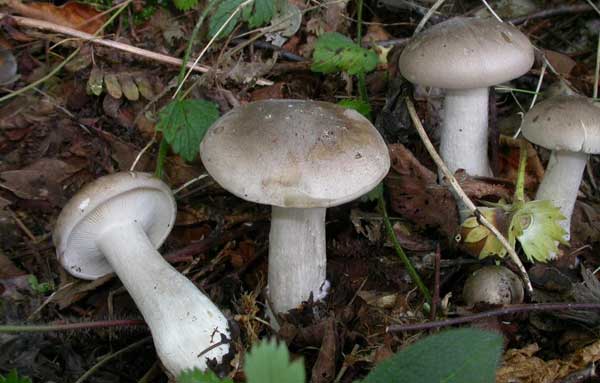
The taste and smell of ryadovka is significantly different from the usual "mushroom" one. The sweet "flower" aroma (some associate with fruits, shampoo, soap) becomes stronger during cooking and persists after the dish has cooled. The taste is peculiar, spicy, sweet and sour; far from mushroom, but pleasant enough.
The smoky row is very much boiled down - only one liter jar can be marinated from a kilogram of raw product. It is harvested quickly, but the entire "huge" harvest after cooking turns out to be very modest. Another disadvantage is the abundance of worms, which happily feed on the pulp.
This mushroom can be fried, pickled and even dried. Before cooking, it must be washed in warm water, removing adhering debris. Then it is boiled in boiling water, flavored with salt for 15-20 minutes.
Talkers are whitish, whitish and reddish-brown
Whitish talker (Clitocybe candicans). The cap is 1.5–5 cm in diameter, initially convex, later flattened to a concave one, the edge is thin and lowered. The skin is slightly mealy at first, then shiny, smooth. The color is white, sometimes with a faint pink tint. The plates are frequent, weakly descending, white. The pulp is thin, white, the smell is expressionless, the taste is pleasant.
The leg is 2–4 cm high, up to 0.5 cm in diameter, cylindrical, often bent at the base, tomentose-pubescent. The color is white or yellowish.
Spore powder. White.
Habitat. In forests of different types on litter and needles.
Season. August - November.
Similarity. With other small white talkers, which should be refrained from collecting.
Use. The mushroom is suspicious, in different sources it is designated as poisonous, inedible, non-poisonous. According to some reports, it contains muscarine.
Whitish talker, whitewashed talker (Clitocybe dealbata). The cap is 2–4 cm in diameter, convex or flat, later funnel-shaped, often irregular in shape, with a winding, uneven edge. The skin is smooth, dry, with a light powdery bloom. The color is whitish, with faint grayish zones along the edge in the form of concentric circles formed by cracking of the plaque, at maturity with ocher spots. The plates are adherent or descending, white or grayish, then cream. The pulp is thin, white, the taste is expressionless, the smell is weak.
The leg is 2–4 cm high, up to 1 cm in diameter, cylindrical, slightly thickened towards the base, whitish or creamy, at first solid, later hollow.
Spore powder. White.
Habitat. In meadows, pastures, on forest grassy edges.
Season. Summer autumn.
Similarity. The mushroom is extremely similar to the willow (Clitopilus prunulus), which has a much stronger floury smell and in which the plates acquire a pinkish tinge at maturity.
Use. A very poisonous mushroom due to its high muscarine content.
Caution: in case of the slightest doubt, it is better to refuse to collect white talkers altogether.
Cracking Talker, Reddish Talker (Clitocybe rivulosa). The cap is 2–5 cm in diameter, initially convex, later spreads out, depressed in the center, covered with a powdery white bloom, which cracks as the cap grows, revealing the main color - cream or reddish-reddish. As a result, the surface is covered with vague concentric zones. The plates are adherent, frequent, reddish-white, later cream. The pulp is thin, the taste is expressionless, the smell is inexpressive.
The leg is 2–4 cm high, 0.4–0.8 cm in diameter, of the same color with the cap, or reddish brown, slightly tomentose at the base.
Spore powder. White.
Habitat. In forests, gardens, parks, often along paths, along the sides of ditches.
Season. From late summer to autumn.
Similarity. With other small white talkers, with edible willow (Clitopilus prunulus), which has a flour smell and pink plates.
Use. The mushroom is very poisonous.
Caution: do not collect small white talkers if you are not sure of the exact definition.
The talker is reddish-brown. The cap is 5–9 cm in diameter, wide-funnel-shaped, red-yellow, reddish-brown or rusty-spotted, often hygrophane. The plates are frequent, descending, cream or yellow-rusty. The pulp is thin, brittle, tough, reddish or pale yellow, sour smell, tart taste.
The leg is 3-5 cm high, up to 1 cm in diameter, reddish, lighter than the cap, tough.
Spore powder. White.
Habitat. In coniferous, less often deciduous forests.
Season. It is an autumn species that grows until frost-resistant.
Similarity. It looks like a water-spotted talker (C. gilva) growing in deciduous and coniferous forests, lighter colored and having watery spots on the surface; on the edible funnel-shaped govorushka (C. infundibuliformis), in which the plates are white.
Use. Previously, the red-brown talker and the water-spotted talker were considered edible, but later muscarine was found in them. The information in the literature about their edibility is very contradictory, moreover, their taste is mediocre, and therefore we do not recommend picking these mushrooms.
Look at the photo of the talker mushrooms, the description of which is presented on this page:
Large smooth bent talker in the photo
Rare edible mushroom Orange talker in the photo
Whitish talker in the photo
Inverted and aniseed talkers
Inverted talker (reverse lepist). The hat is 4-8 cm in diameter, as the fungus grows, it becomes wide-funnel-shaped, brick- or red-yellow-brown, fades over time, shiny in damp weather. The plates are frequent, descending to the stem, light yellow, then brown-yellow, sandy-buffy. The flesh is thin, grayish-yellow or pale yellow, light brownish, with a faint sour odor. The stem is tapered, elongated at the base, often curved, rigid, solid, then hollow, reddish, usually lighter than the cap, or rusty-brown. The inverted talker can be found in pine forests and plantings on coniferous litter, in mixed forests on litter. Fruit bodies form large groups in August - October.
Cooking. Insufficient edible mushroom. Suitable after boiling for salting. Some authors classify this mushroom as inedible.
Aniseed talker is an edible lamellar mushroom. Other names are fragrant talker and fragrant talker.A fairly rare mushroom that grows singly or in small groups from early August to late October, giving large yields annually. Most often it can be found in mixed and spruce forests.
When describing this talker, it is worth noting that its convex cap with the edges bent downward in the process of growth straightens and takes on a prostrate shape. In the center, it usually has a small depression, less often a tubercle. The cap is painted gray-green, lighter along the edge.
The spore-bearing layer contains adherent plates, whitish in young mushrooms, pale green in mature ones. The leg is rounded, wider at the base, grayish-yellow in color with a greenish tint. Its height is about 5 cm with a diameter of no more than 0.5 cm. The surface of the stem at the cap is smooth, slightly pubescent at the base. The flesh is thin, watery, pale green or off-white in color, with a strong smell of anise.
Aniseed talker belongs to the fourth category of mushrooms. It is eaten in boiled, salted or pickled form, and as a result of heat treatment, the characteristic smell of anise is significantly weakened and becomes not as pronounced as in fresh mushrooms.
Where do talker mushrooms grow?
The habitat of talkers is very extensive and includes all countries of the Northern Hemisphere with a temperate climate. Talker mushrooms grow among meadows, fields and parks. The genus forms resistant mycorrhiza with deciduous or coniferous trees of forests of the European part of Russia, France, Italy, Portugal, Poland, Germany, Denmark, Belarus, Spain and other European countries. Found in Western and Eastern Asia. Populations of talkers are noted in Turkey, China, Primorsky Territory. Some species grow in the vastness of the North American continent.
Useful properties of talkers
Edible types of talkers are used to make soups, sauces, they are also used fried or stewed. Smoky talker can even be salted or dried. The fruiting bodies of this kind of mushrooms are used as low-calorie foods, without which practically no professional diet is inconceivable.
- The hats of young edible talkers contain B vitamins, as well as macro- and microelements, being real treasures of copper, zinc and manganese.
- The pulp of the talker helps to remove accumulated toxins from the body.
- The optimal ratio of plant proteins, vitamins, fiber, amino acids and minerals can reduce the risk of various diseases. Talker mushrooms reduce the content of cholesterol plaques in the blood vessels, eating them has a beneficial effect on the state of the digestive system.
- In addition, in folk and official medicine, the antibacterial properties of talkers are used. Broths of talkers are used to relieve tuberculous manifestations, and the substance clithocybin contained in them is part of drugs for the treatment of epilepsy.

Inverted Talker (Paralepista flaccida)
Synonyms:
- Red & brown talker
- Clitocybe flaccida
- Omphalia flaccida
- Lepista flaccida
- Clitocybe infundibuliformis sensu auct.
- Clitocybe inversa
- Omphalia inversa
- Lepista inversa
- Clitocybe gilva var. guttatomarmorata
- Clitocybe gilva var. tianschanica

Description
Hat with a diameter of 3-11 cm (sometimes up to 14 cm); at first it is convex with the edges tucked inward, with age it straightens out to a flat one or even takes the form of a shallow funnel or bowl; its surface is dry, almost smooth, matte, orange-brown or brick-colored; hygrophane (turns pale when dry). The edge of the cap is often wavy, with pronounced depressions such as the spout of a jug, which distinguishes this species from the similar funnel-shaped talker (Clitocybe gibba). There is evidence that sometimes in inverted talkers, which appear already very late in the fall, the cap remains convex, without forming the usual depression in the center.
The plates are descending, narrow, rather frequent, at first almost white, later pinkish-beige or pale orange, with age they become dark orange or pink-brown.
Leg 3-10 cm in height and up to 1.5 cm in diameter, more or less cylindrical, dry, finely pubescent; painted to match the cap, only slightly lighter; pubescent of whitish mycelium at the base.
The pulp is thin (in the cap), whitish, with a sweetish odor, which is sometimes compared to the smell of frozen orange juice or bergamot, without a pronounced taste.
Whitish to off-white spore mark Spores 4-5 x 3.5-4 μm, practically spherical to broadly elliptical, finely warty, non-amyloid. Cystyds are absent. Buckled hyphae.
Chemical reactions
KOH paints the surface of the cap yellow.
Ecology and distribution
Saprophyte, grows scattered or in close groups on a coniferous litter, often at the foot of anthills, sometimes on wet sawdust and wood chips. More often found in coniferous and mixed forests, sometimes it grows on humus-rich soils, where it forms spectacular "witch rings". A common species in the Northern Hemisphere, common in North America, mainland Europe and Great Britain. The period of active growth is autumn, until the onset of cold weather, however, in some places it can shift to winter (for example, the coast of California), or continue - in mild climates - until January (for example, in Great Britain and Ireland).
What can be confused with an inverted talker
The funnel-shaped talker (Clitocybe gibba) found in the same biotopes is distinguished by a paler coloration, the absence of a wavy edge, and significantly larger, elongated white spores. In addition, it has a much thicker flesh in the cap. The brown-yellow bell (Paralepista gilva) has a lighter, creamy yellow or brownish-yellow hue, and the cap shows rounded watery spots (in youth) or dark rusty brown specks (in more mature specimens).
The much larger Lepista multiformis is found in open grassy areas (meadows, roadsides, parks and lawns), and has been recorded in Europe (rather rare).
Edibility
According to some sources, the inverted talker is not poisonous, but its nutritional quality leaves much to be desired, and there is little point in collecting it.
According to others, it is poisonous (contains muscarinic toxins).
Video about the mushroom Govorushka inverted:

